Today we are looking at the ASUS KGPE-D16 which is a very popular server platform for AMD Opteron 6000 series processors. This is also officially the first motherboard that we are adding an accompanying flyover video for. The ASUS KGPE-D16 is a dual AMD Opteron motherboard sporting two G34 sockets. With the new AMD Opteron 6300 chips launched, the ASUS KGPE-D16 now supports three generations of CPUs. The AMD Opteron 6300, 6200 and 6100 series in reverse chronological order. While the AMD G34 platform is starting to show its age, it also means that there are many CPUs to fill the ASUS KGPE-D16. Server pulls are common since many data centers upgrade with each successive generation. That fact has made dual AMD Opteron 6000 series platforms a popular dual socket gateway. Let’s take a look at the ASUS KGPE-D16 and see what it has to offer.
Test Configuration
For this review I decided to update that which was used on the Supermicro H8DG6-F review a bit. Interestingly enough, another very popular option with these boards is using 2x AMD Opteron 6128 off ebay which run under $175 these days for both chips.
- CPUs: 2x AMD Opteron 6234 (12 core 2.4GHz)
- Motherboard: ASUS KGPE-D16
- Memory: 64GB using 8x 8GB Kingston 1600MHz Registered ECC DDR3 DIMMs
- SSD: Samsung 830 256GB
- Power Supply: Corsair AX650 650w 80 Plus Gold
- Chassis: Norco RPC-450B
- Cooling: 2x Dynatron A1 G34 Coolers
The ASUS KGPE-D16
First off, the ASUS KGPE-D16 is a large motherboard. It is a 12″ x 13″ EEB form factor. That means it is a fairly large motherboard and the mounting points are going to be best supported by server chassis.
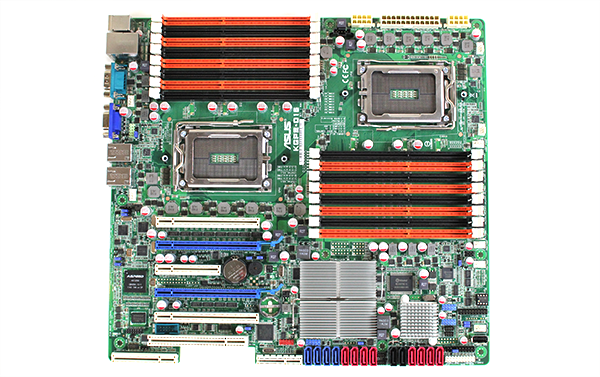
One item that stands out on the G34 platform is that the eight DIMM slots are typically found to one side of each CPU. Intel’s LGA 2011 platform for the Intel Xeon E5 series CPUs typically see DIMMs placed to either side of the CPU. The AMD Opteron platform supports a maximum of 256GB registered as opposed to Intel’s 512GB or 768GB on the Intel Xeon E5 dual socket platform. Then again, 256GB is achieved using 16GB registered ECC DIMMs so moving to 32GB DIMMs is a huge price increase making it impractical for many applications.
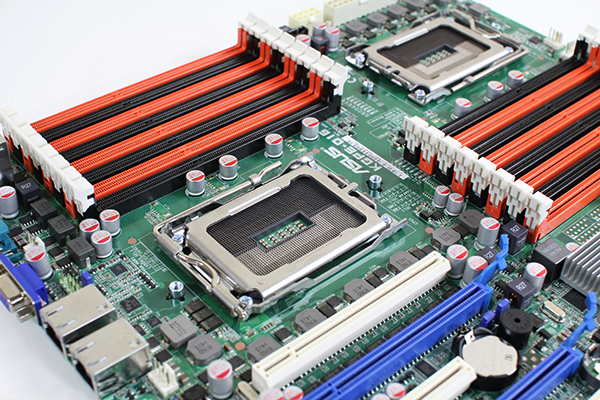
Internal storage is interesting. The AMD Opteron platforms still have only six SATA II ports off of the southbridge. ASUS provides an internal Type A USB header where one can install an internal USB flash drive. This is very useful for things such as shipping servers with a USB boot device in place en-route to datacenters.
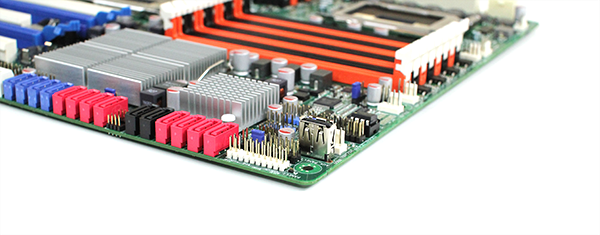
Probably the most interesting piece of the storage puzzle are the eight ASUS PIKE ports. ASUS has a proprietary form factor for add-on storage controllers called PIKE. You can see the PIKE slot at the bottom of the mainboard. The idea is you add a special SAS controller in that slot and the eight motherboard ports become active. Currently ASUS lists six controllers as supported:
ASUS PIKE SAS Controller :
ASUS PIKE 1064E 4-port SAS RAID card
ASUS PIKE 1068E 8-port SAS RAID card
ASUS PIKE 1078 8-port SAS HW RAID card
ASUS PIKE 6480 8-port SAS RAID card
ASUS PIKE 2008 8-port SAS2 6G RAID card
ASUS PIKE 2008/IMR 8-port SAS2 6G RAID card

The ASUS PIKE 6480 is the only non-LSI SAS controller on the list. It uses a Marvell 88SE6480 which is a 3.0gbps max device. These days, I would look at the ASUS PIKE 2008 versions.
Networking is provided by 2x Intel 8257L gigabit NICs. The ASUS KGPE-D16 also provides a Realtek management NIC onboard.
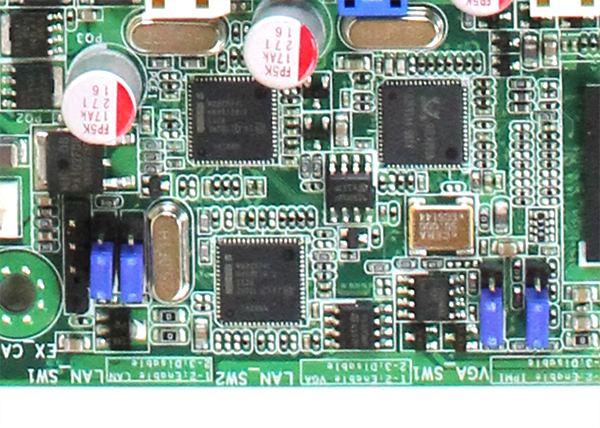
As one can see, ASUS is using Japanese 5K capacitors on the KGPE-D16. ASUS provided the following table below to show the reasoning behind that component choice. Simply put it is a choice to enhance reliability.
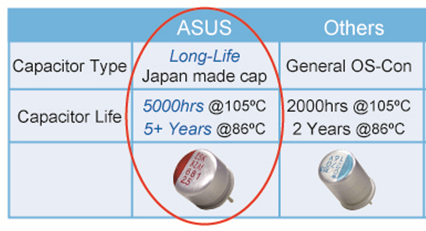
Remote management is enabled using the de-facto Aspeed AST2000 family, however ASUS adds a bit of a spin. Like with the PIKE solution, the ASUS KGPE-D16 comes wired for out-of-band remote management, but you need to install a small PCB on an internal header. This is the ASUS ASMB4-iKVM module that enables KVM-over-IP.
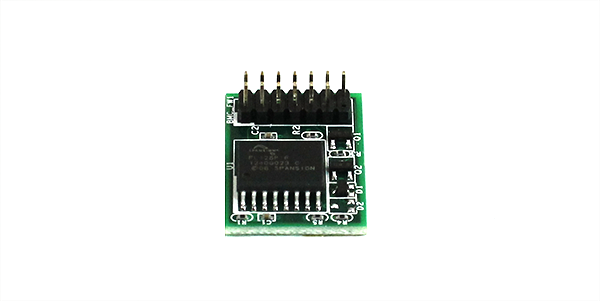
Overall a very simple installation that does allow one to do things such as access the ASUS KGPE-D16 BIOS remotely.
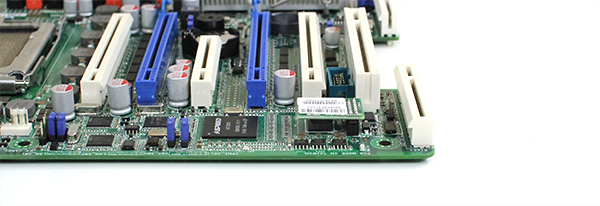
The rear I/O panel of the ASUS KGPE-D16 has a few typical server features. The rightmost ports are two Intel 82574L gigabit network controllers. There are the VGA and serial ports. ASUS does something a bit different as it provides PS/2 keyboard and mouse ports (separately) on the KGPE-D16. There are only two USB 2.0 ports on the ASUS KGPE-D16 rear I/O panel which is the bare minimum for a server (keyboard + mouse.) Those sit just below the out-of-band management network port. Overall a very similar setup to the Supermicro H8DG6-F reviewed earlier and what one would expect ASUS to provide.
The ASUS KGPE-D16 has a fairly complex PCIe switching pattern available with their Flex-E technology.
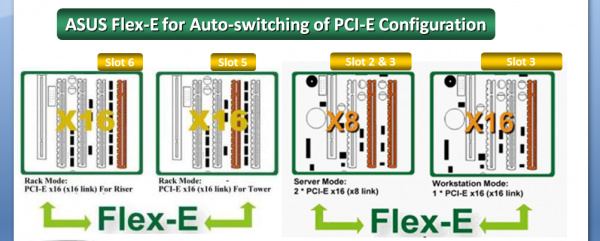
As one can see, the ASUS KGPE-D16 has four PCIe Gen2 x16 slots, one x8 slot in addition to the PIKE interface and the PCI expansion slot. Th ASUS Flex-E technology allows for flexible PCIe switching based on the configuration the user presents.
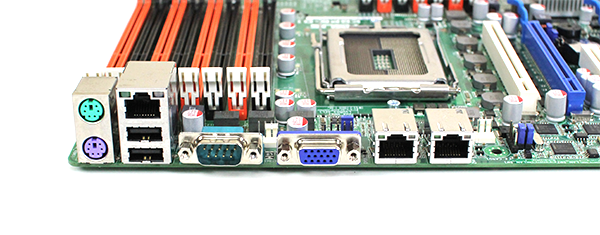
ASUS does offer a MIO module for audio output if one employs the KGPE-D16 as a workstation motherboard. We did not have one of these to test.
ASUS ASMB4-iKVM Management
Remote management is virtually a must these days. Nobody has been able to provide us with exact figures, but the numbers we here are anywhere from 65% to 80%+ of servers are shipping with some sort of remote management. In the near future, we will go into depth on the solution. Needless to say, the ASMB4-iKVM module allows out-of-band management and the ability to have great control over the system. For example, one can mount an installation ISO remotely over the out-of-band LAN port and install an operating system using the JAVA KVM.
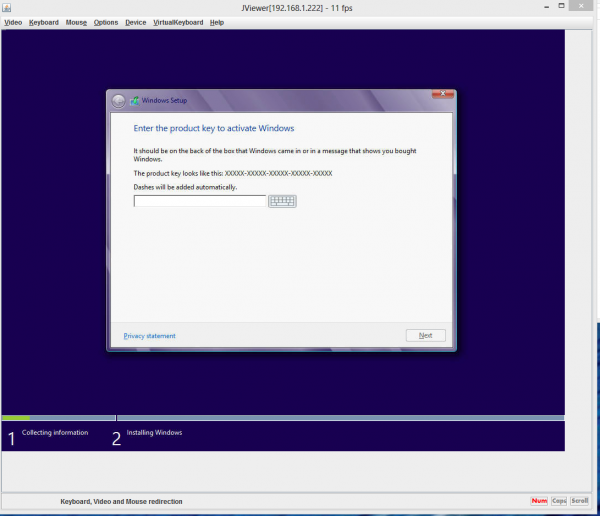
As we saw recently, one can even flash ROMs over the ASUS KGPE-D16 IPMI 2.0 interface. Being able to enter BIOS remotely is a key capability for IPMI 2.0 implementations and is a major driver for their popularity.
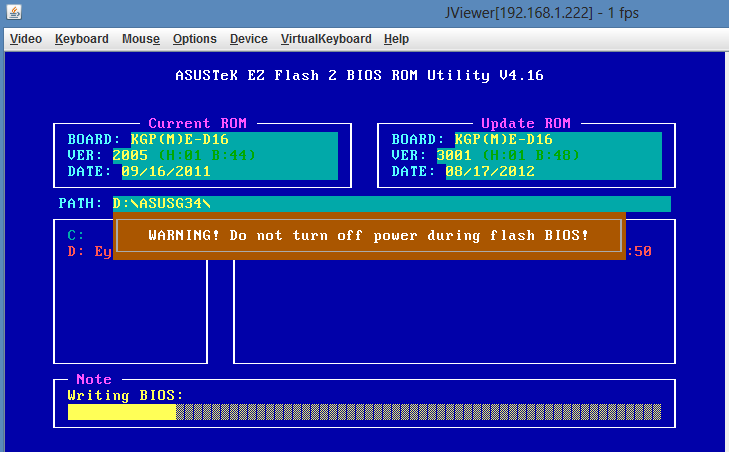
ASUS also provides a familiar management interface to perform many tasks remotely.

We will be delving into the ASUS iKVM solution in-depth shortly, but suffice to say it is a solid implementation once the ASMB-iKVM4 module is installed.
Warranty
ASUS offers both a three year warranty along with their 1 day advanced replacement service with the boards. The idea behind ASUS ARS is that they will process and ship a warranty item if it is in stock, within one day.
ASUS ServerCare guarantees the availability of server barebone systems and server motherboards in the ASUS warehouse to eliminate the shipping and handling charges on each order. The results are reduced shipping costs and delivery lead-time. A technical support hotline is set up in headquarter to resolve technical inquiries from partners and an A RMA (return material authorization) team, based in the Netherlands, facilitates ASUS 1-Day ARS (Advanced Replacement RMA Service) to offer efficient technical support.
Conclusion
Overall, the ASUS KGPE-D16 performed very well. The motherboard handled the add-in RAID card, Infiniband card, and etc. testing with ease. VMware ESXi installed as did Ubuntu. Windows Server 2012 worked on the ASUS KGPE-D16 after a BIOS update to 3001. After the formal review, we did try out a few more configurations such as faster Opteron 6200 series 16-core CPUs and the ASUS KGPE-D16 also had no issue. After the initial setup, the ASUS KGPE-D16 managed days straight of 100% CPU load so the sample ASUS sent remained stable even under load. All and all, a solid dual AMD Opteron platform to build a server upon. At around $420 retail, it is in-line with other dual socket motherboards.
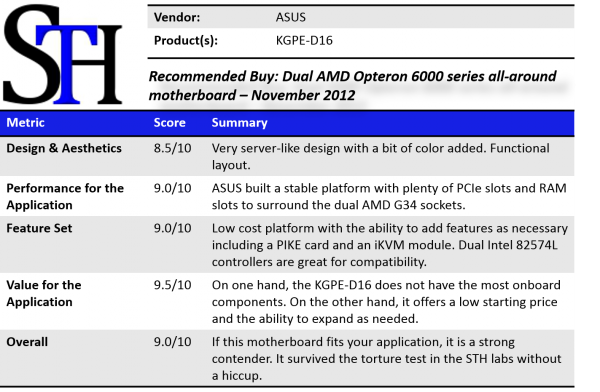





Ha video! Nice 1! Can’t wait to see v2 of that.
These ASUS dual G34 boards seem to have many fans. Keep hearing good things.
I found the KGPE-D16 to be very reliable – I highly recommend it. I do want to note two gotchas, both clearly documented but still worth a mention:
1) The board has five total PCIe slots, but you can use only four or three of them. You get an x4 slot plus either two x16s or an x16 and two x8.
2) A quick look at the board shows 14 disk ports, but eight of them only work when you install the PIKE card you mention.
Been looking at this for dual cpu virtualization rig.
Good review. might get it 4 myself.
I hear much good things about the ASUS KGPE-D16.
Like the video.